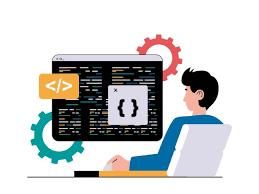.png)
.png)
Python
Python
Python is a versatile, high-level programming language known for its readability, ease of use, and extensive standard library. It is a general-purpose language that supports various programming paradigms, including procedural, object-oriented, and functional programming. Python has gained widespread popularity in diverse domains such as web development, data science, machine learning, artificial intelligence, automation, scientific computing, and more.
Here are some key features and concepts of Python:
Readable and Concise Syntax: Python's syntax is designed to be clear and readable, making it accessible for beginners and enjoyable for experienced developers. It emphasizes code readability through the use of indentation rather than braces.
Interpreted Language: Python is an interpreted language, meaning that code is executed line by line at runtime by the Python interpreter. This makes development and debugging easier as code can be tested immediately.
Dynamic Typing: Python is dynamically typed, allowing developers to create variables without specifying their type explicitly. The interpreter determines the type at runtime, providing flexibility but requiring careful attention to variable types.
Extensive Standard Library: Python comes with a comprehensive standard library that provides modules and packages for a wide range of tasks, from file I/O to networking, web development, and more. This reduces the need for external libraries in many cases.
Object-Oriented Programming: Python supports object-oriented programming principles, allowing developers to use classes and objects to structure their code. Inheritance, encapsulation, and polymorphism are key features of Python's object-oriented capabilities.
Duck Typing: Python follows the "duck typing" philosophy, which means the type or class of an object is less important than its behavior. If an object quacks like a duck (i.e., it has the expected methods or attributes), Python treats it as a duck.
High-Level Data Structures: Python provides built-in high-level data structures such as lists, tuples, dictionaries, and sets. These data structures simplify programming tasks and make it easy to express complex ideas with concise code.
Functional Programming Features: While Python is primarily an imperative and object-oriented language, it includes features from functional programming, such as first-class functions, lambda expressions, and higher-order functions.
Community and Ecosystem: Python has a large and active community of developers. The Python Package Index (PyPI) hosts a vast collection of third-party libraries and frameworks, making it easy to find and use tools for various tasks.
Cross-Platform Compatibility: Python is cross-platform, meaning that Python code can run on different operating systems without modification. This makes it a versatile choice for developing applications that need to run on various platforms.
Data Science and Machine Learning: Python is widely used in data science and machine learning. Libraries like NumPy, pandas, Matplotlib, and scikit-learn provide powerful tools for data analysis, manipulation, visualization, and machine learning.
Web Development Frameworks: Python has several web development frameworks, including Django and Flask, which simplify the process of building web applications.
Python's simplicity, readability, and versatility have contributed to its popularity across a wide range of industries and applications. It's a great language for both beginners and experienced developers, and its ecosystem continues to grow with the support of an enthusiastic community.




